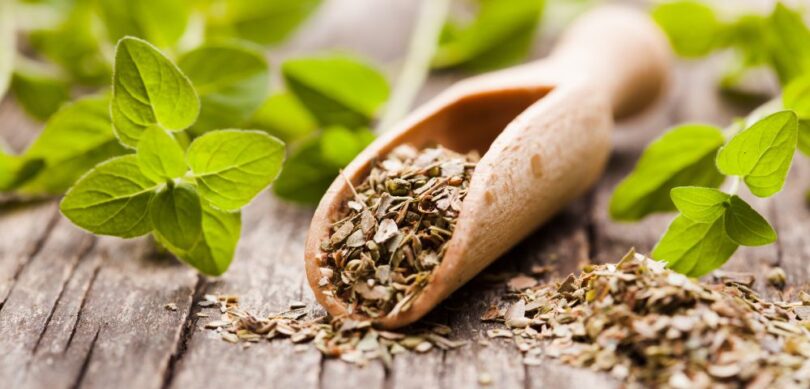If you’re a fan of cooking with herbs, you know that fresh herbs are always the best. However, there are times when you need to use dried herbs. Dried herbs have a more concentrated flavor, and they’re perfect for long-term storage.
In this article, we’ll guide you through the process of drying sage – one of the most popular herbs used in cooking. Whether you’re a beginner or an experienced herb enthusiast, you’ll find valuable tips and tricks in this guide.
Why Dry Sage?
Drying sage is a great way to preserve the herb’s flavor and aroma. When you dry sage, you remove most of the moisture from the leaves, which concentrates the essential oils that give sage its distinct flavor. Dried sage also has a longer shelf life than fresh sage, making it ideal for long-term storage.
How To Dry Sage
Harvesting Sage
When to Harvest Sage?
The best time to harvest sage is in the morning when the leaves are dry. Sage is at its peak just before it blooms, so you should harvest it before the flowers appear. You can also harvest sage throughout the growing season, but the flavor may be less intense.
How to Harvest Sage?
To harvest sage, use a sharp pair of scissors or pruning shears to snip off the stems just above the base of the plant. You can harvest individual leaves, but it’s easier to harvest whole stems. Cut back no more than 1/3 of the plant at a time to ensure healthy growth.
How to Clean Sage?
Once you’ve harvested your sage, you’ll need to clean it. Rinse the sage under cold running water to remove any dirt or debris. Gently shake off the excess water and pat the leaves dry with a clean towel.
Drying Sage
Air Drying Sage
Air drying is the most traditional and easiest way to dry sage.
Tie the sage stems together with twine and hang them upside down in a dry, well-ventilated area. You can also place the sage leaves on a drying rack, making sure they’re not touching each other. Air drying takes about 1-2 weeks, depending on the humidity and temperature.
Dehydrating Sage
If you have a dehydrator, drying sage is a breeze.
- Spread the sage leaves in a single layer on the dehydrator trays, making sure they’re not touching.
- Set the dehydrator to 95°F and dry the sage for 1-2 hours or until the leaves are crispy.
Oven Drying Sage
If you don’t have a dehydrator, you can dry sage in the oven.
- Preheat your oven to a minimum heat, not more than 170°F, and line a baking sheet with parchment paper.
- Spread the sage leaves in a single layer on the parchment paper and place the baking sheet in the oven.
- Leave the oven door slightly ajar to allow the moisture to escape.
- Check the sage every 20 minutes and remove any leaves that are dry and crispy. Oven drying takes about 1-2 hours.
Microwave Drying Sage
If you’re short on time, you can also dry sage in the microwave.
Place the sage leaves on a microwave-safe plate and microwave them on high for 1-2 minutes. Check the leaves every 30 seconds and remove any that are dry and crispy.
How to Store Dried Sage?
Once you’ve dried your sage, store it in an airtight container in a cool, dry, and dark place. You can also store sage in a plastic bag with a few holes punched in it to allow for air circulation. Dried sage can last up to a year if stored properly.
See also: How to store dried herbs
How to Use Dried Sage?
Dried sage can be used in a variety of dishes, such as soups, stews, and sauces. It’s also a popular seasoning for meats, especially poultry. To use dried sage, simply crush the leaves between your fingers or grind them with a mortar and pestle. Use about half the amount of dried sage that you would use for fresh sage, as dried herbs are more concentrated.
Alternative Ways to Use Sage
Besides cooking, sage has many other uses. It’s often used in aromatherapy for its calming properties. You can also make sage tea by steeping a few leaves in hot water for 5-10 minutes. Sage tea has many health benefits, including soothing sore throats and relieving digestive issues.
Tips and Tricks
- Always use fresh, high-quality sage for the best flavor.
- If you’re air-drying sage, make sure the leaves are not touching to avoid mold.
- Store dried sage in an airtight container to prevent moisture from getting in.
- To ensure your sage is completely dry, snap a leaf in half. If it snaps easily, it’s dry. If it bends, it needs more time to dry.
- Please don’t wash your sage right before drying it, as the moisture can cause mold.
Drying sage is a simple and effective way to preserve this versatile herb. Whether you prefer air drying, dehydrating, oven drying, or microwave drying, you can enjoy the benefits of dried sage year-round. Follow these tips and tricks, and you’ll have flavorful and aromatic sage at your fingertips whenever you need it.
FAQs
Can I dry sage in the sun?
It’s not recommended to dry sage in the sun, as the intense heat can cause the herb to lose its flavor and color.
How do I know if my sage is dry enough?
To check if your sage is dry enough, snap a leaf in half. If it snaps easily, it’s dry. If it bends, it needs more time to dry.
Can I use dried sage instead of fresh sage in a recipe?
Yes, you can use dried sage instead of fresh sage in a recipe. However, use about half the amount of dried sage that you would use for fresh sage, as dried herbs are more concentrated.
How long does dried sage last?
Dried sage can last up to a year if stored properly in an airtight container in a cool, dry, and dark place.
Can I freeze-dried sage?
Yes, you can freeze-dried sage in an airtight container or a plastic bag. However, freezing can affect the texture and flavor of the sage, so it’s best to use it within 3-6 months.





